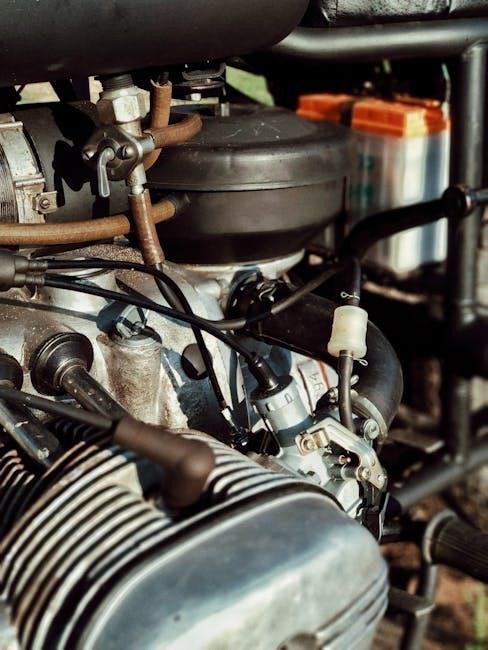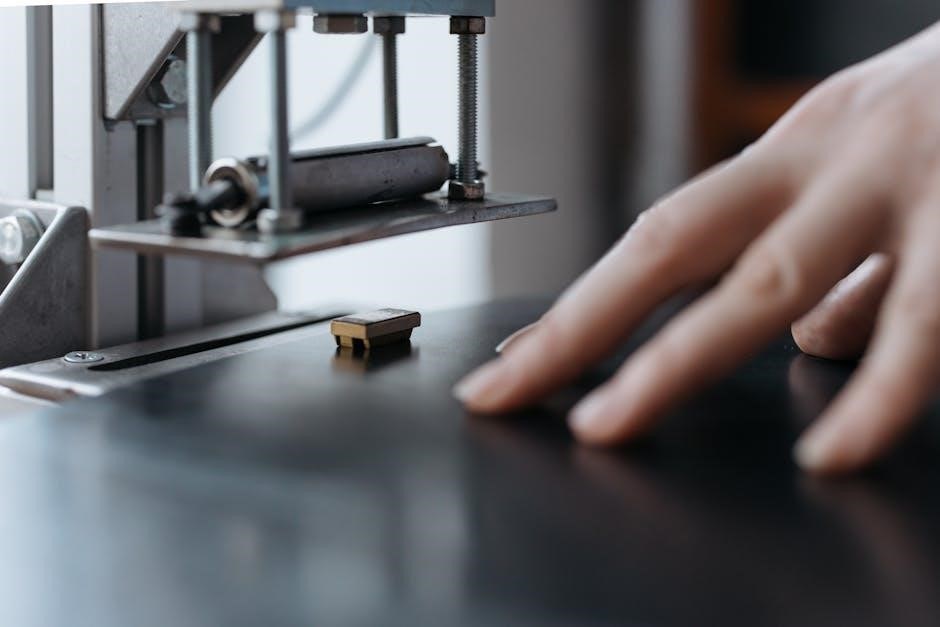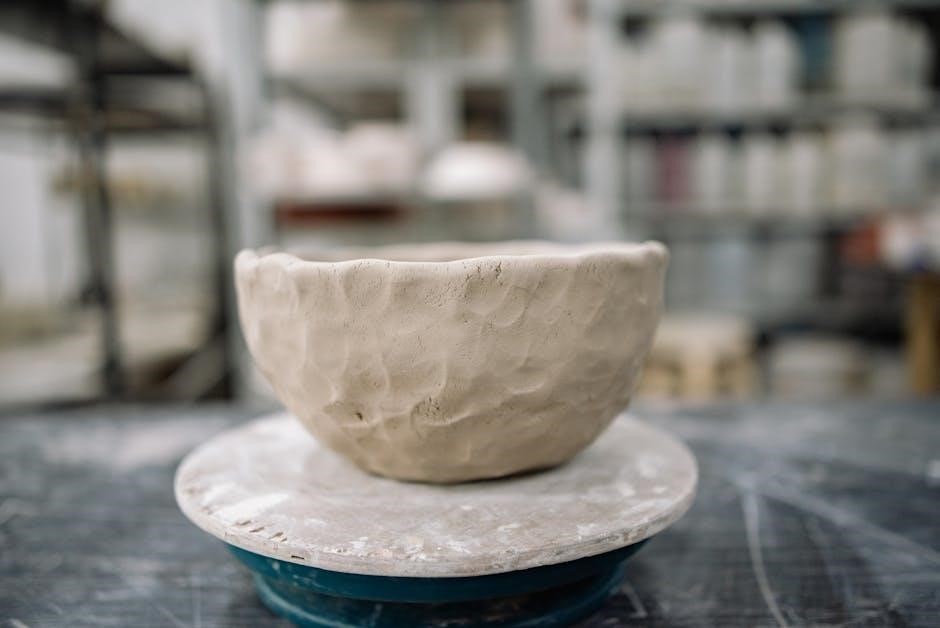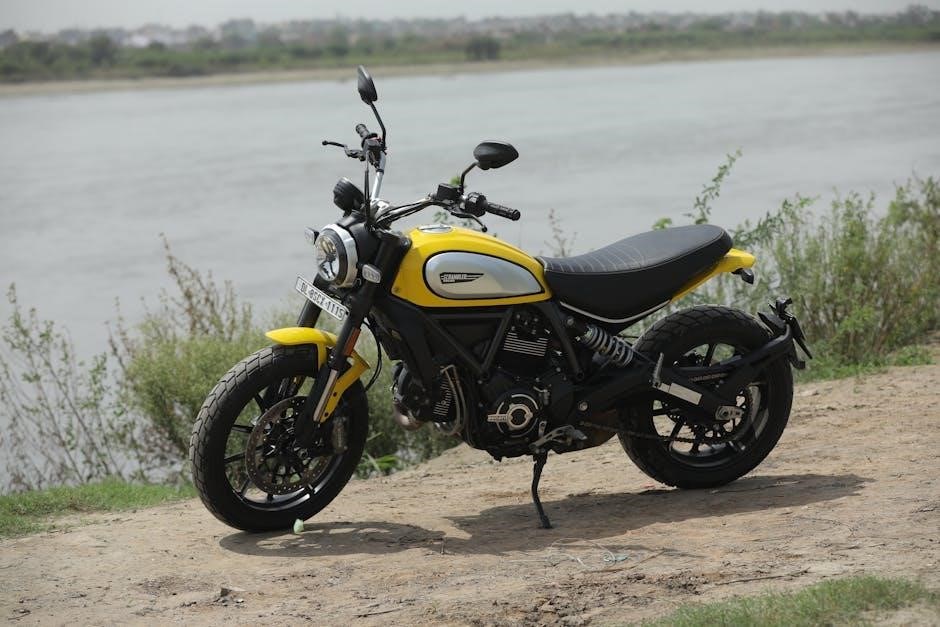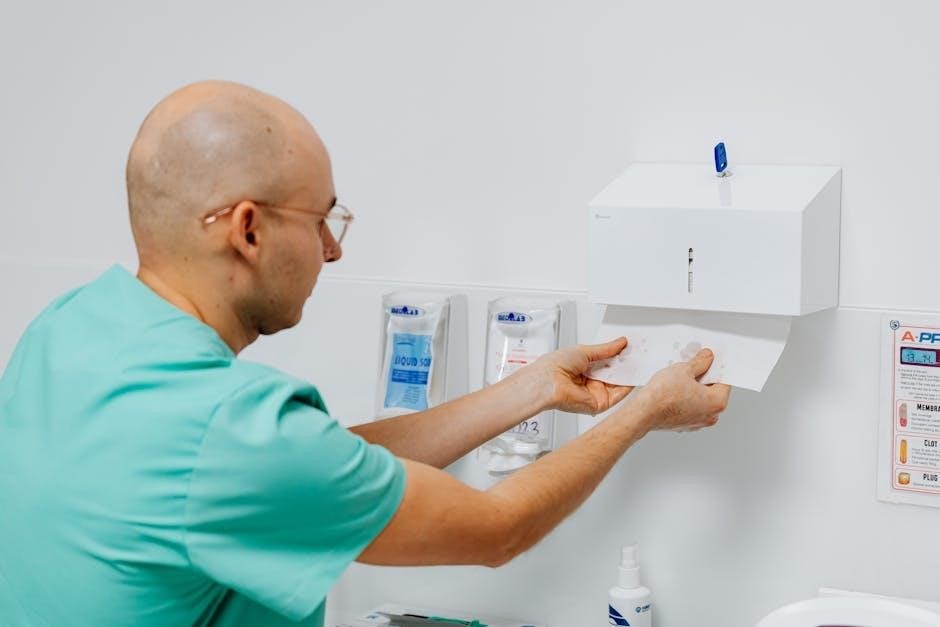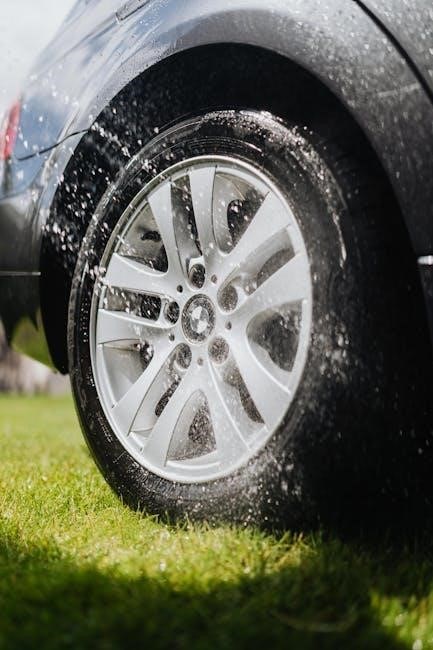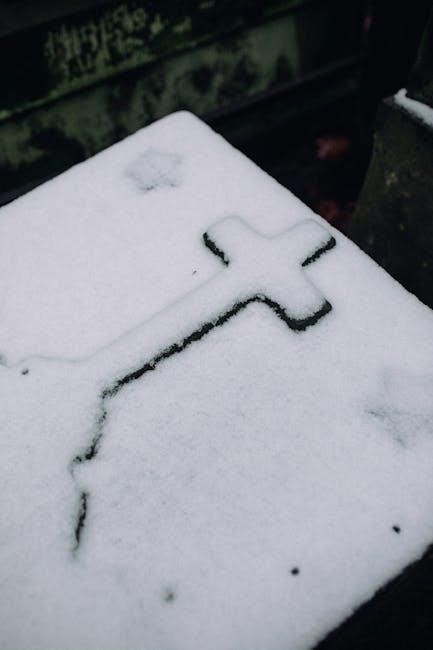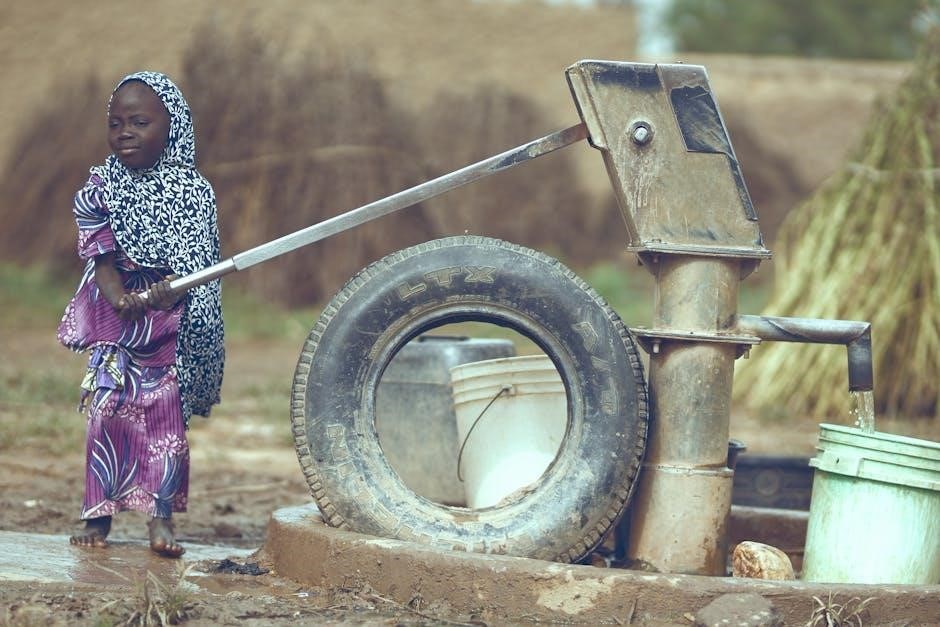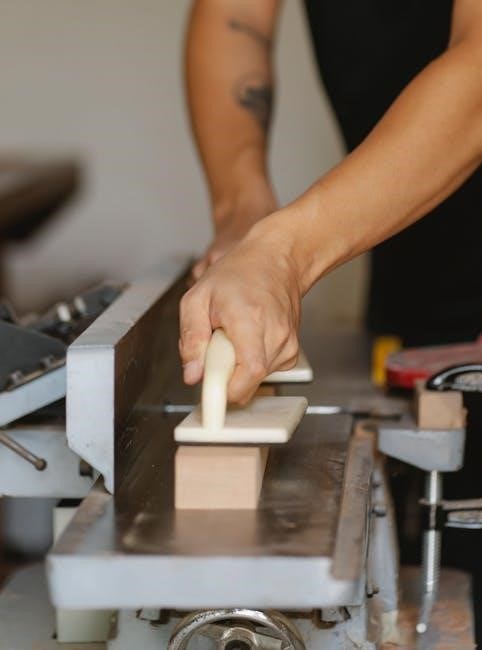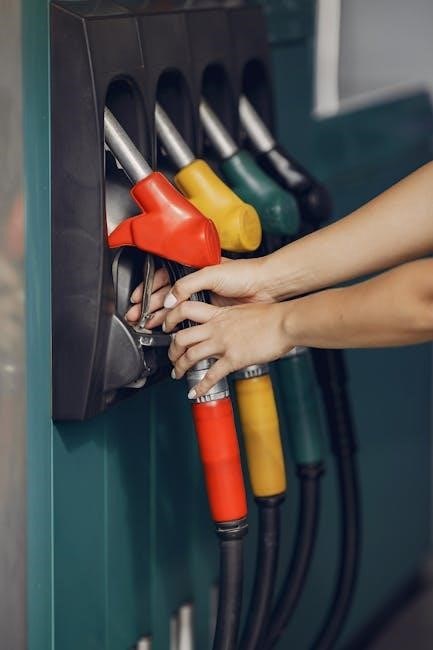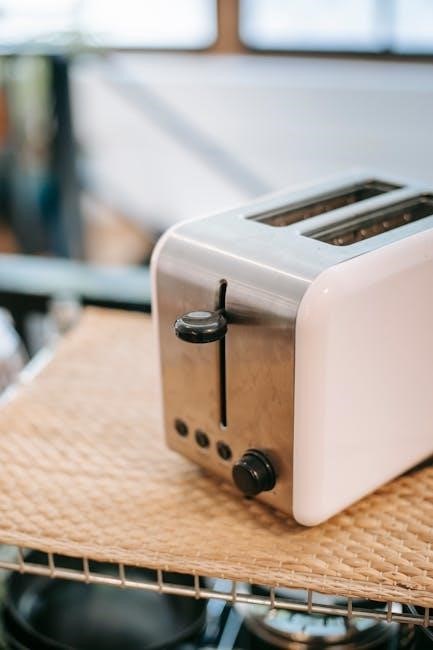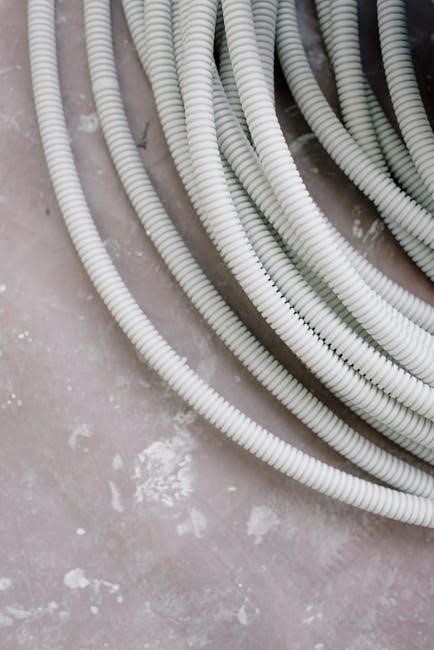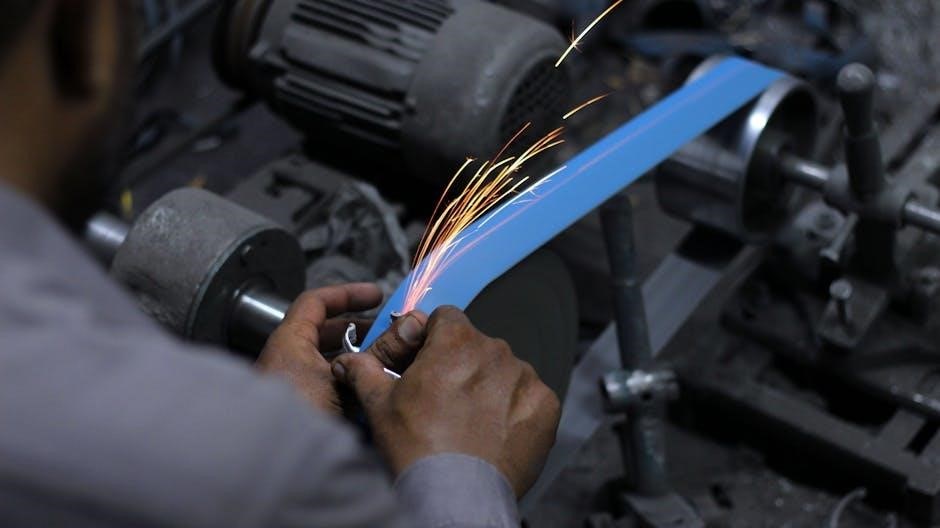A Yamaha outboard motor manual is essential for understanding operation, maintenance, and repair. It provides detailed guidance, ensuring optimal performance and longevity of your outboard motor.
Overview of Yamaha Outboard Motors
Yamaha outboard motors are renowned for their exceptional reliability and superior performance, catering to a wide range of marine applications. With a diverse lineup that includes models like the F25 and higher horsepower options, Yamaha provides efficient and durable power solutions for various boat types. Their innovative designs emphasize lightweight construction without sacrificing power, ensuring excellent fuel efficiency and smooth operation. Whether for recreational boating or commercial use, Yamaha outboard motors are a preferred choice, backed by cutting-edge technology and a commitment to quality. They offer unmatched durability and reliability, making them a top selection for maritime enthusiasts and professionals alike.
Importance of Using the Manual
Using a Yamaha outboard motor manual is crucial for safe and effective operation. It provides essential information for installation, operation, and troubleshooting. The manual ensures proper maintenance, helping to prevent damage and extend the motor’s lifespan. It includes detailed schedules for routine servicing, torque specifications, and error code interpretations. Referencing the manual guarantees compliance with manufacturer guidelines, optimizing performance and reliability. Additionally, it aids in identifying genuine parts, ensuring compatibility and safety. Regularly consulting the manual helps avoid costly repairs and ensures adherence to Yamaha’s recommendations for optimal functionality and longevity of the outboard motor.
Key Features of Yamaha Outboard Motor Manuals
Yamaha outboard motor manuals are comprehensive guides designed to assist users in understanding and maintaining their motors effectively. They include detailed diagrams, step-by-step instructions, and troubleshooting tips. These manuals cover essential topics such as installation, operation, and repair, ensuring optimal performance. They also provide maintenance schedules, torque specifications, and guidelines for diagnosing issues. Additionally, Yamaha manuals often include sections on serial number identification and recommendations for genuine parts. The clear and concise format makes them accessible for both novice and experienced users, ensuring safe and efficient use of Yamaha outboard motors.

Understanding Yamaha Outboard Motor Components
Yamaha outboard motors are built with precision-engineered components, including the engine, gearcase, and control systems. Each part is designed for durability and optimal performance in various water conditions.
Major Parts of the Outboard Motor
The Yamaha outboard motor comprises several key components, including the engine block, cylinder head, and gearcase. The engine block houses the pistons and crankshaft, while the cylinder head manages airflow. The gearcase contains the gears that transfer power to the propeller, enabling efficient propulsion. Additional components like the starter motor, alternator, and throttle control system ensure smooth operation. Understanding these parts is crucial for proper maintenance and troubleshooting, as outlined in the manual. Regular inspection of these components helps prevent damage and ensures optimal performance on the water.
Control Systems and Functions
The Yamaha outboard motor features advanced control systems designed for precise operation. The throttle control regulates engine speed, while the gearshift system manages forward, neutral, and reverse gears. The steering system, whether manual or electronic, ensures directional control. Modern models incorporate digital controls, such as Yamaha’s Digital Electronic Control, for smooth shifting and throttle response. These systems work in harmony to enhance maneuverability and performance. Proper use of controls, as detailed in the manual, ensures safe and efficient boating experiences. Regular inspection of these systems is vital to maintain optimal functionality and prevent operational issues.
Fuel System Overview
The Yamaha outboard motor’s fuel system is designed for efficient performance and reliability. It consists of a fuel tank, fuel lines, fuel injectors, and a fuel filter. The system delivers fuel to the engine at the correct pressure and flow rate, ensuring optimal combustion. Yamaha recommends using high-quality marine fuel to prevent contamination and maintain engine health. Regular inspection of fuel lines for leaks or damage is crucial. The fuel filter should be replaced as specified in the manual to avoid clogging and engine issues. Proper fuel system maintenance ensures consistent power delivery and extends the motor’s lifespan.
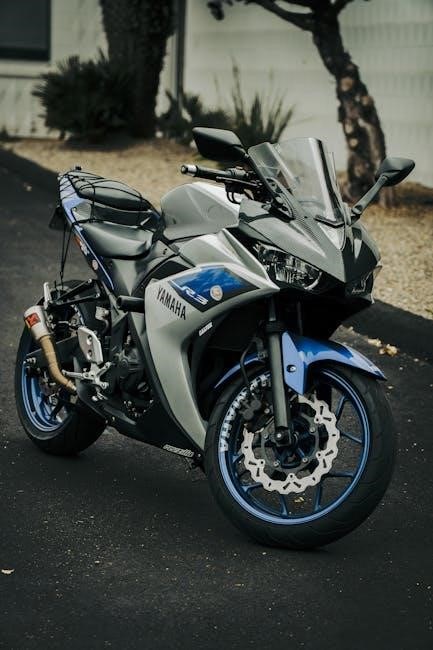
Electrical System Components
The Yamaha outboard motor’s electrical system includes essential components like the battery, starter motor, alternator, and wiring harness. The battery powers the ignition and electrical accessories, while the starter motor initiates engine operation. The alternator charges the battery and supplies power during operation. The wiring harness connects all electrical components, ensuring proper communication and functionality. Gauges and indicators, such as voltage meters, monitor system performance. Modern Yamaha outboards also feature advanced electronic control modules for efficient engine management. Proper maintenance of these components, as outlined in the manual, is crucial for reliable operation and longevity of the electrical system.
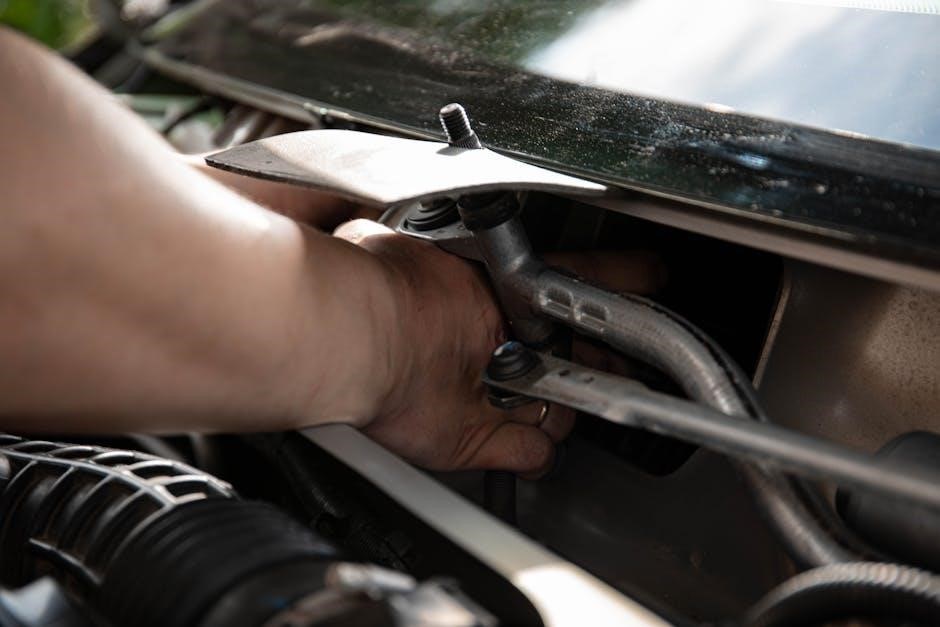
Maintenance and Servicing Guidelines
Regular cleaning, inspecting for damage, and following Yamaha’s recommended maintenance schedule ensure optimal performance and longevity of your outboard motor.
Regular Maintenance Schedule
Regular maintenance is crucial for optimal performance. Yamaha recommends pre-operation checks, post-operation checks, and specific service intervals. Every 50 hours, inspect the propeller and lubricate moving parts. At 100 hours, replace the engine oil and filter. Annually, check the electrical system, fuel lines, and coolant levels. Always use genuine Yamaha parts to ensure compatibility and maintain warranty validity. Follow the manual’s guidelines for seasonal preparation, such as winterization, to protect your motor from corrosion. Consulting a Yamaha dealer or certified technician ensures adherence to these schedules and maintains your motor’s longevity and efficiency.
Oil and Lubricant Requirements
Regular oil changes are vital for maintaining your Yamaha outboard motor. Use Yamaha-approved 10W-30 or 10W-40 marine oil for optimal performance. Always check oil levels before use and top up as needed. Lubricate moving parts like the propeller shaft and steering components with Yamaha-recommended grease. Failure to use proper lubricants can lead to increased wear, reduced efficiency, and potential engine damage. Refer to your manual for specific viscosity and type recommendations, ensuring compatibility with your motor’s design. Using genuine Yamaha lubricants guarantees adherence to manufacturer standards and prolongs your motor’s lifespan.
Propeller Maintenance Tips
Proper propeller maintenance is crucial for your Yamaha outboard motor’s performance. Regularly inspect the propeller for dings, bends, or corrosion, and replace it if damaged. Clean the propeller after each use to remove marine growth, which can reduce efficiency. Apply a thin layer of waterproof grease to the propeller shaft to prevent corrosion. Store the propeller in a dry place during off-seasons to avoid rust. For optimal performance, ensure the propeller is correctly sized and pitched for your boat. Always refer to your Yamaha manual for specific maintenance recommendations tailored to your motor model.
Serial Number Identification and Importance
Your Yamaha outboard motor’s serial number is a unique identifier located on the engine block or a sticker. It provides essential details about the motor’s manufacturing date, model, and specifications. Checking the serial number ensures you have the correct manual and parts for maintenance and repairs. A boat mechanic can verify the serial number to confirm the motor’s authenticity and history. This information is crucial for warranty claims, service records, and ensuring compatibility with accessories. Always reference the serial number when ordering parts or seeking support to maintain your motor’s performance and longevity.

Troubleshooting Common Issues
Identify and resolve issues promptly using diagnostic tools and guidelines in the manual. Address engine, fuel, and electrical problems efficiently to ensure optimal performance and longevity of your motor.
Diagnosing Engine Problems
Diagnosing engine issues in Yamaha outboard motors begins with identifying symptoms like rough idling, misfires, or overheating. Consult the manual for troubleshooting charts to pinpoint problems. Check fuel flow, spark plugs, and cooling systems. Use diagnostic tools like the Yamaha Diagnostic System (YDIS) to retrieve error codes. Verify compression and ensure proper lubrication. Addressing issues early prevents minor problems from escalating into major repairs. Always refer to the manual for specific repair procedures and guidelines to maintain engine performance and longevity. Regular checks ensure reliable operation and extend the motor’s lifespan.
Addressing Fuel System Issues
Fuel system problems in Yamaha outboard motors can often be traced to contamination, blockages, or improper fuel. Start by inspecting fuel lines, connectors, and filters for damage or debris. Replace the fuel filter and drain any contaminated fuel. Check the fuel tank for moisture or sediment. Use a fuel additive to stabilize the fuel and clean the system. Always refer to the manual for specific procedures, such as bleeding the fuel system or replacing components. Proper maintenance ensures optimal fuel flow and prevents engine performance issues. Regular inspections help avoid costly repairs and keep the motor running smoothly.
Electrical System Troubleshooting
Electrical system issues in Yamaha outboard motors often stem from faulty connections, corrosion, or sensor malfunctions. Begin by inspecting battery terminals and connections for corrosion or damage. Use a multimeter to test for voltage drops or short circuits in wiring. Check sensors like the throttle position sensor and engine temperature sensor for proper function. Refer to the manual for error code diagnostics, as some issues may trigger specific codes. Resetting the system or replacing faulty components can resolve many electrical problems. Always follow proper grounding procedures to avoid further damage. Regular inspections and clean connections ensure reliable electrical performance.
Common Error Codes and Solutions
Yamaha outboard motors display error codes to indicate specific issues. Common codes include:
– Code 11: Engine temperature high. Check coolant level and water intake for blockages.
– Code 32: Oil pressure low. Inspect oil level and filter; replace if necessary.
– Code 43: Throttle position sensor malfunction. Clean or replace the sensor.
– Code 51: Ignition coil failure. Test and replace faulty coils.
Refer to the manual for a full list of codes. Resetting the system or addressing the root cause often resolves the issue. Persistent errors may require professional diagnosis. Always consult genuine Yamaha resources for accurate solutions. Regular checks can prevent recurring problems.
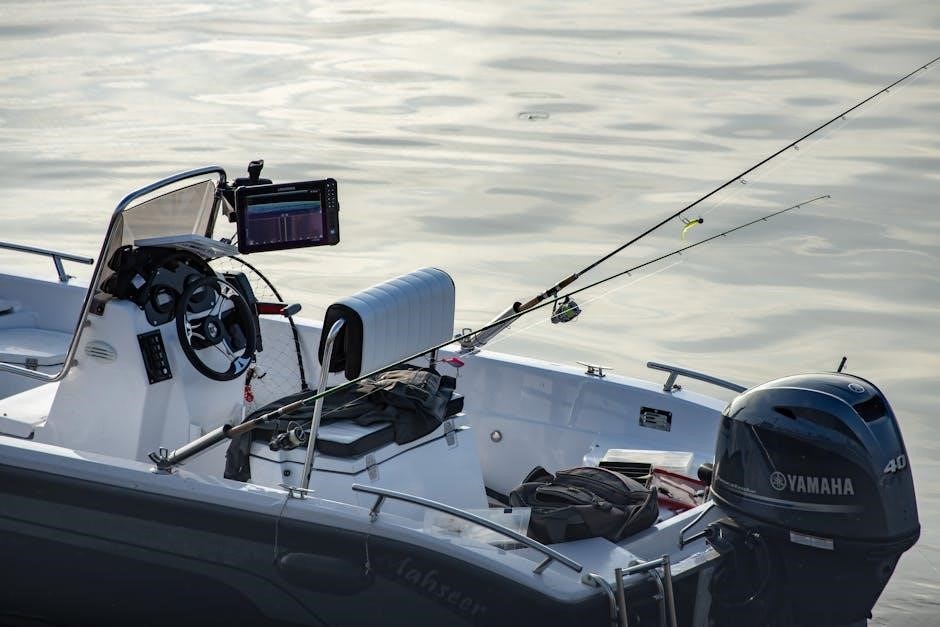
Winterization and Storage
Winterizing your Yamaha outboard motor protects it from cold damage. Drain fluids, clean thoroughly, and store in a dry, protected area to ensure optimal performance next season.
Preparing the Motor for Winter
Preparing your Yamaha outboard motor for winter involves draining the fuel system, flushing the cooling system with antifreeze, and lubricating moving parts. Disconnect the battery and store it in a cool, dry place. Apply a rust-inhibiting coating to metal components and cover the motor to protect it from dust and moisture. Follow the manufacturer’s guidelines to ensure all steps are completed correctly, preventing damage from freezing temperatures and ensuring the motor is ready for use when spring arrives.
Proper Storage Techniques
Proper storage of your Yamaha outboard motor involves keeping it in a clean, dry environment, protected from moisture and contaminants. Use a high-quality, breathable cover to prevent dust accumulation and ensure the motor is stored upright to avoid oil leakage. Avoid storing in humid or salty environments, as this can lead to corrosion. Keep the motor away from direct sunlight and extreme temperatures. Always follow Yamaha’s storage guidelines to maintain the motor’s condition and performance. Regularly inspect the storage area to ensure it remains secure and dry throughout the off-season.
Protecting the Motor from Corrosion
Protecting your Yamaha outboard motor from corrosion involves applying a marine-grade corrosion-resistant coating and washing the motor with fresh water after use, especially in salty environments. Regularly inspect and clean electrical connections to prevent rust. Apply a fogging spray to internal engine components during storage to shield them from moisture. Store the motor in a dry, well-ventilated area away from direct sunlight and humidity. Use a cover to protect against dust and debris. Follow Yamaha’s corrosion prevention guidelines to ensure long-term durability and performance of your outboard motor.
Pre-Winterization Checklist
Before winterizing your Yamaha outboard motor, ensure you complete the following steps: drain the fuel system and run a fuel stabilizer through the engine to prevent spoilage. Fog the cylinders with a rust-inhibiting spray and change the lower unit oil to protect internal components. Inspect the propeller for damage and clean the motor thoroughly. Disconnect the battery and charge it periodically during storage. Cover the motor with a breathable cover to shield it from dust and moisture. Follow Yamaha’s guidelines to ensure your motor remains in optimal condition during the off-season.

Safety Precautions and Best Practices
Always wear a Coast Guard-approved life jacket and ensure proper ventilation to avoid carbon monoxide exposure. Follow Yamaha’s operational guidelines and be aware of weather conditions.
General Safety Guidelines
Always adhere to Yamaha’s safety guidelines to ensure safe operation. Wear a Coast Guard-approved life jacket and protective gear. Ensure proper ventilation to prevent carbon monoxide exposure. Avoid operating the motor in confined spaces or near open flames. Keep loose clothing and long hair tied back. Never operate the motor while under the influence of alcohol or drugs. Stay alert and avoid distractions while operating. Keep children and pets at a safe distance. Familiarize yourself with emergency stop procedures and carry essential safety equipment. Regularly inspect the motor and surrounding area for hazards.
Operating the Motor Safely
Always operate the Yamaha outboard motor with caution and attention. Before starting, ensure the propeller is clear of debris and the area around the motor is unobstructed. Monitor your surroundings, avoiding swimmers, shallow waters, and submerged objects. Use the throttle gradually to avoid sudden acceleration. Keep a safe distance from other boats and structures. Ensure all passengers are seated securely and holding on when moving at high speeds. Avoid operating in poor visibility or extreme weather conditions. Follow local boating laws and regulations. Attach the kill switch to your wrist or clothing for emergency shutdown.
Emergency Procedures
In case of an emergency, remain calm and follow proper procedures. If the engine fails, secure the boat and attempt to restart it. For a fire, use the fire extinguisher and shut off the fuel supply. If someone falls overboard, stop the engine immediately and throw a flotation device. Always keep emergency contacts handy. Refer to your Yamaha outboard motor manual for specific model instructions. Ensure all safety equipment is accessible and functioning properly. Familiarize yourself with these procedures to handle emergencies effectively and safely.
Environmental Considerations
Yamaha outboard motors are designed with environmental sustainability in mind. Always use the recommended fuel type to minimize emissions. Avoid spilling fuel during refueling and dispose of waste properly. Regular maintenance ensures optimal performance and reduces harmful emissions. Use biodegradable fluids and follow local regulations for waste disposal. Yamaha promotes eco-friendly boating practices to protect marine ecosystems. Refer to your manual for guidelines on sustainable operation and maintenance. By adhering to these practices, you contribute to preserving the environment for future generations. Proper handling and disposal of motor-related materials are essential for environmental conservation.

Repair and Replacement
Repair and replacement of Yamaha outboard motors require early detection of wear and tear to prevent major damage. Regular inspection and replacing worn parts ensure reliability. Always use genuine Yamaha parts for optimal performance and durability.
Identifying When Repair is Needed
Identifying when repair is needed for your Yamaha outboard motor involves monitoring performance and physical condition. Look for signs like unusual noises, decreased power, or leaks. Check for worn propellers, corroded connections, or damaged fuel lines. If the motor struggles to start or runs irregularly, professional inspection is recommended. Regularly inspect belts, hoses, and electrical components for wear. Addressing issues early prevents costly repairs. Always refer to your Yamaha manual for guidance and consult a certified technician for complex problems to ensure reliability and safety.
Replacing Wear and Tear Parts
Replacing wear and tear parts on your Yamaha outboard motor is essential for maintaining performance and longevity. Common components like belts, hoses, and propeller parts often require replacement due to constant exposure to harsh marine conditions. Always use genuine Yamaha parts to ensure compatibility and durability. Regularly inspect these items during maintenance checks and replace them as recommended in your manual. Addressing wear early can prevent more extensive damage. If unsure, consult a certified technician to ensure proper installation and functionality, keeping your motor running smoothly and efficiently.
Tools and Equipment Required
Proper tools and equipment are essential for servicing your Yamaha outboard motor. A socket set, screwdrivers, pliers, and a torque wrench are fundamental for most repairs. Additionally, a multimeter is useful for diagnosing electrical issues, while a drain pan and oil filter wrench simplify oil changes. Cleaning supplies, such as a wire brush and solvent, help maintain the motor’s condition. Always refer to your Yamaha manual for specific tool recommendations. Using the correct tools ensures safety, prevents damage, and guarantees proper repairs. If unsure, consult a certified technician for assistance.
Finding Genuine Yamaha Parts
Finding genuine Yamaha parts is crucial for maintaining your outboard motor’s performance and warranty. Always purchase from authorized Yamaha dealers or the official Yamaha online store. Verify part numbers using your motor’s serial number and manual. Avoid counterfeit parts, as they may void your warranty or cause operational issues. Genuine Yamaha parts ensure reliability, durability, and compatibility. For assistance, contact Yamaha customer support or visit their website. This ensures you get the correct components for your specific model, guaranteeing safety and optimal functioning of your outboard motor.

Fuel and Propeller Care
Use high-quality, unleaded gasoline with the recommended octane rating. Regularly inspect and clean the propeller for optimal performance. Properly store fuel and maintain the propeller to avoid damage and ensure efficient operation.
Fuel Types and Recommendations
Yamaha outboard motors require high-quality, unleaded gasoline with a minimum octane rating of 87. Avoid using ethanol-blended fuels if possible, as they can cause corrosion and damage. If ethanol-blended fuel is used, ensure it contains no more than 10% ethanol. Always store fuel in a vented container and check for contamination before use. Use a fuel stabilizer to prevent degradation during storage. Proper fuel care ensures optimal engine performance, reduces maintenance needs, and extends the motor’s lifespan. Adhere to Yamaha’s recommendations to maintain warranty coverage and prevent costly repairs.
Propeller Selection and Care
Choosing the right propeller for your Yamaha outboard motor is crucial for optimal performance. Select a propeller that matches your boat’s size, usage, and the motor’s RPM range. Aluminum propellers are durable and cost-effective, while stainless steel offers higher performance and longevity. Regularly inspect the propeller for dents or damage, and clean it after use to prevent debris buildup. Store the propeller in a dry place during off-seasons. Apply grease to the hub kit to prevent corrosion. A well-maintained propeller ensures better fuel efficiency, reduced vibration, and enhanced overall performance. Always follow Yamaha’s guidelines for propeller selection and care.
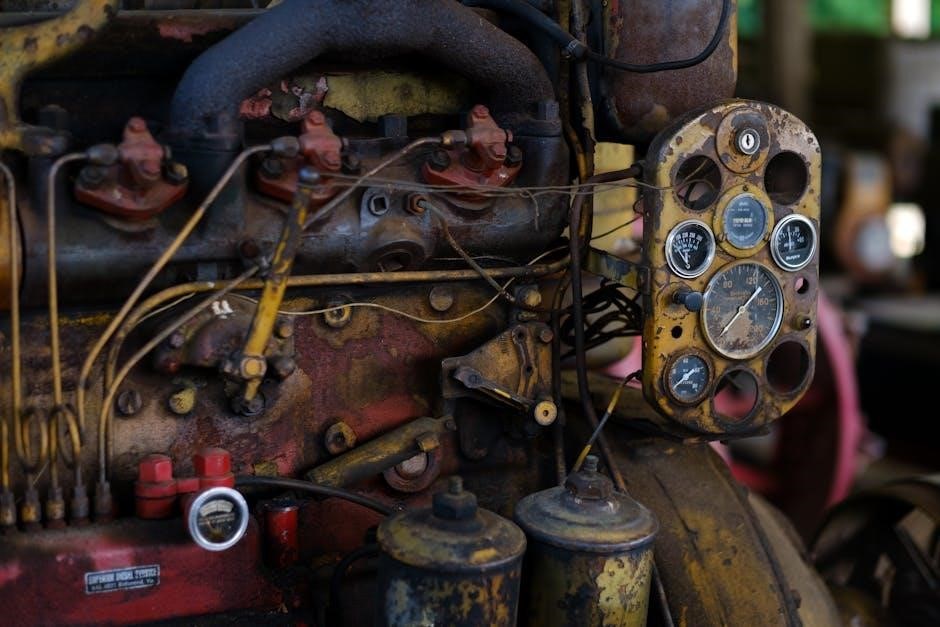
Optimizing Fuel Efficiency
Maximizing fuel efficiency for your Yamaha outboard motor involves several key strategies. Ensure proper propeller sizing and type for your boat’s application, as incorrect sizing can lead to excessive fuel consumption. Regularly clean the motor and lower unit to remove debris that can create drag. Maintain optimal RPM levels by avoiding high throttle settings during cruising. Keep the hull clean and free of barnacles to reduce resistance. Additionally, monitor fuel flow using Yamaha’s fuel management system and adjust driving habits to minimize waste. Proper maintenance and adherence to Yamaha’s guidelines will significantly enhance fuel efficiency and overall performance.
Fuel System Cleaning Techniques
Regular cleaning of the fuel system is essential for maintaining optimal performance and preventing damage. Start by draining old fuel and replacing it with fresh, high-quality fuel. Use a fuel filter to trap debris and contaminants. Clean the fuel injectors periodically to remove buildup and ensure proper spray patterns. Inspect the fuel tank for rust or corrosion and clean it as needed. Use Yamaha-approved cleaning solutions to avoid damaging components. Finally, check and replace the fuel lines if they show signs of wear or cracking. Regular cleaning helps prevent issues like rough idling or loss of power.
